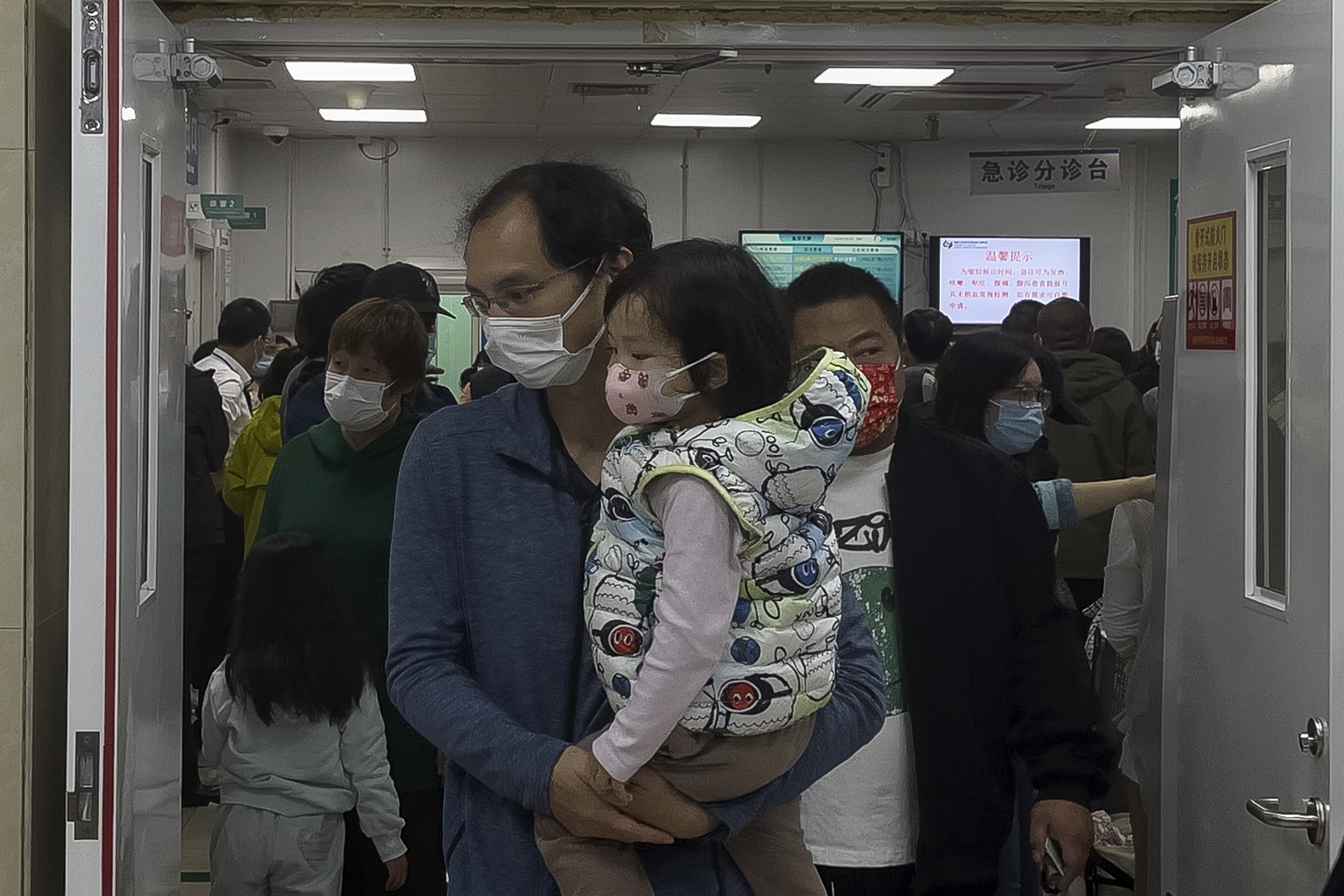After an uptick of respiratory illness in children in Ohio and Massachusetts, some San Diego parents may be wondering if they should be concerned about a new respiratory illness spreading through the county.
The concern comes from a new medical buzzword, "white lung syndrome," that has taken off amid an increase in pediatric pneumonia cases. But what does white lung syndrome actually mean and is there any cause for concern?
What is white lung syndrome?
White lung syndrome is not an actual medical term, according to Rady Children's pediatric infectious disease specialist, Dr. Edmund Milder. The term appears to be a new buzzword that some have used to describe common respiratory illnesses, particularly pediatric pneumonia.
Get top local stories in San Diego delivered to you every morning. Sign up for NBC San Diego's News Headlines newsletter.
"That's probably related to the fact that when you get a chest X-ray on somebody who has pneumonia, their lungs appear more white because there's more fluid in there showing the infection," Milder said. The term is "really a constellation of common illnesses."
The term may have gained traction after an increase in pediatric pneumonia cases in Massachusetts and Ohio. Last week, Ohio's Warren County Health District announced that 142 cases of pediatric pneumonia were reported there since August. Even there, doctors are debunking the phrase.
"There's no such thing as white lung syndrome," said Dr. Shira Doron, chief infection control officer for Tufts Medicine Health System. "It's not even pneumonia of unknown etiology, it's pneumonia of known etiology. It's pneumonia that we see during respiratory season."
It's not even pneumonia of unknown etiology;
Dr. Shira Doron, chief infection control officer for Tufts Medicine Health System
it's pneumonia of known etiology. It's pneumonia that we
see during respiratory season
Are there outbreaks of child respiratory illnesses in San Diego?
The Centers for Disease Control is looking into reports of pneumonia outbreaks in children in two states, but Dr. Mandy Cohen, director of the agency, said “there is no evidence” that they are due to anything unusual.
The spike experienced in Ohio, and some of the cases seen elsewhere, aren't indicative of a new strain of pneumonia, doctors say. In fact, the symptoms are common, including, a cough fever and fatigue.
"It doesn't appear that we've identified any new pathogens to be concerned about," Milder said.
Here in San Diego, cases of influenza and RSV are about on par with last year while cases of COVID-19 are down, likely due to under-reporting, Milder said.
"There's nothing I'm seeing in San Diego County that has me concerned as a parent with three children," Milder said. "We're not seeing increased numbers or increased hospitalizations or anything that's out of keeping with a typical winter season."
What should parents do if their child is sick?
Doctors advise parents to continue taking extra precautions to ensure their children stay safe, including washing their hands, keeping them home from school when they're sick and practicing basic hygiene.
Milder encourages parents to ensure children are up to date with their vaccines, including the flu, COVID-19 and whooping cough vaccines.
If children are sick but can stay hydrated and have a good level of energy, their symptoms are likely able to be treated at home without going to see a doctor, Milder said. But there are signs that could signify your child needs to see a medical professional:
- If a child has an extremely high fever for an extended period of time
- If a child has trouble staying hydrated
- If a child has very little energy
- If you're concerned about how a child is breathing
It is not unusual for a child with a cold to have a cough that lasts a few weeks, but there are things to look out for, Milder said.
"Pertussis [whooping cough] is famous for a very prolonged cough. So if somebody has a really dramatic cough and they're coughing for a long time, pertussis should definitely come to mind," Milder said.
In those cases, a physician can test a patient to help identify cases and provide antibiotics that can help.
More health news
Is there a new respiratory illness in China?
Concern about a new infectious disease may have come from
With respiratory illnesses spiking in China, medical experts here in the U.S. say there should be more of a push to figure out the cause of those illnesses and how to diagnose them.
China said that the surge of respiratory illnesses across the country is caused by the flu, rhinoviruses, and RSV, and not by a novel virus.
The WHO formally requested that China provide information about a potentially worrying spike in respiratory illnesses and clusters of pneumonia in children, as mentioned by several media reports and a global infectious disease monitoring service.
The WHO said Chinese health officials on Thursday provided the data it requested during a teleconference. Those showed an increase in hospital admissions of children due to diseases including bacterial infection, RSV, influenza and common cold viruses since October.
WHO said that there was too little information at the moment to properly assess the risk of these reported cases of respiratory illness in children.



